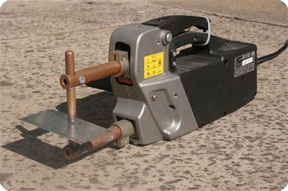willow, did you use pure nickel or some kind of nickel plated steel?
if you go below setting 1, than the welder does nothing what means time cannot be decreased (at least thats what the DN-5 does).
are you 100% sure its tinned copper makita uses and not some kind of nickel-copper alloy below the surface). visually i think you will hardly see this..
what about mechanical strength of nickel vs copper? what happens if you pull if off?
what happens to the weld under vibrations?
many many things to think of and not only electrically conductivity..
if you go below setting 1, than the welder does nothing what means time cannot be decreased (at least thats what the DN-5 does).
anttipaa said:Well makita and hilti uses plated copper in powertool packs. There must be reason for that too? I have to check bosch, hitachi and dewalt. Also those plated copper strips were easier to spotweld than purenickel (with dn-10). I just dont know why?
are you 100% sure its tinned copper makita uses and not some kind of nickel-copper alloy below the surface). visually i think you will hardly see this..
what about mechanical strength of nickel vs copper? what happens if you pull if off?
what happens to the weld under vibrations?
many many things to think of and not only electrically conductivity..


